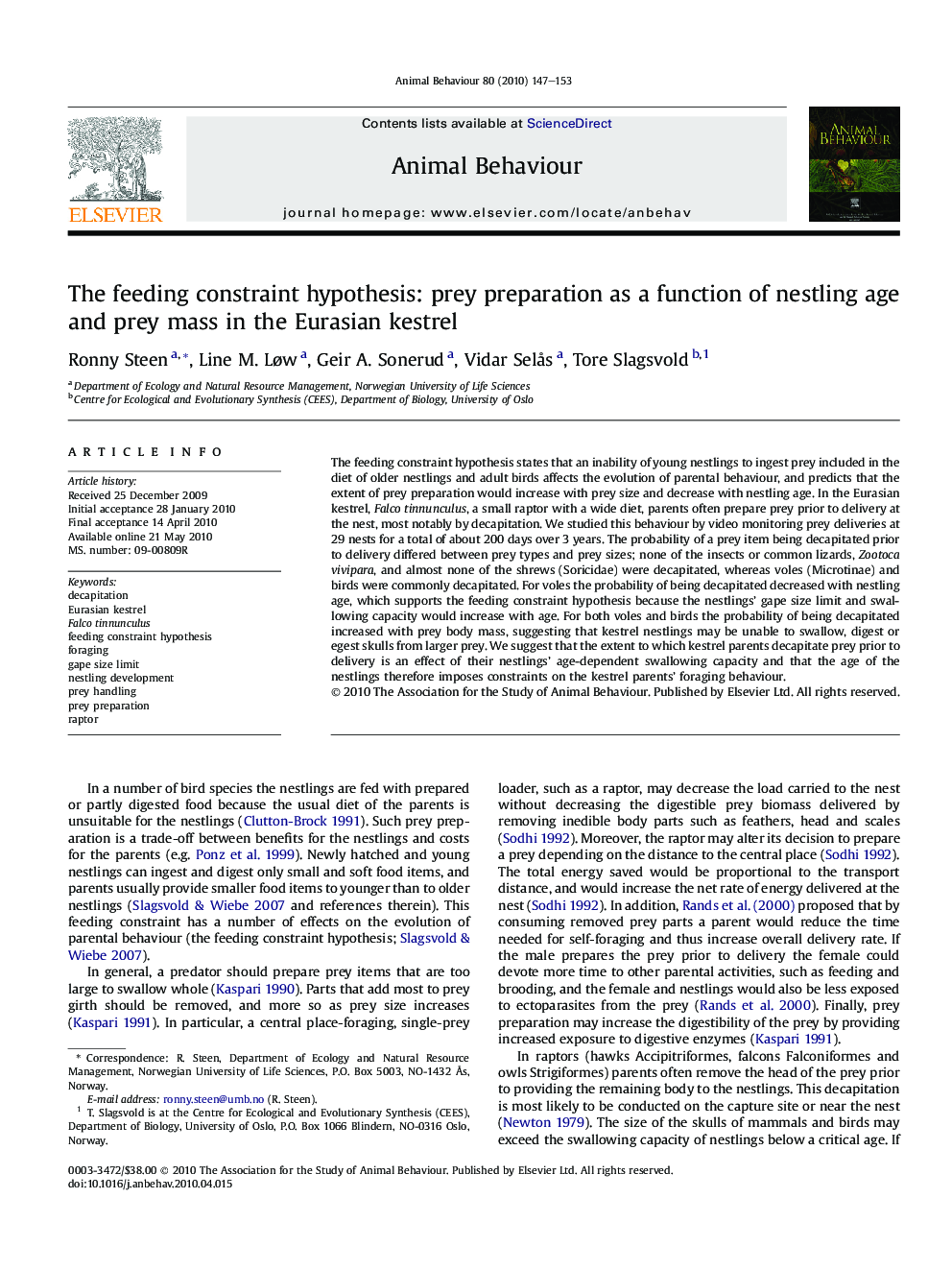| Article ID | Journal | Published Year | Pages | File Type |
|---|---|---|---|---|
| 2417281 | Animal Behaviour | 2010 | 7 Pages |
The feeding constraint hypothesis states that an inability of young nestlings to ingest prey included in the diet of older nestlings and adult birds affects the evolution of parental behaviour, and predicts that the extent of prey preparation would increase with prey size and decrease with nestling age. In the Eurasian kestrel, Falco tinnunculus, a small raptor with a wide diet, parents often prepare prey prior to delivery at the nest, most notably by decapitation. We studied this behaviour by video monitoring prey deliveries at 29 nests for a total of about 200 days over 3 years. The probability of a prey item being decapitated prior to delivery differed between prey types and prey sizes; none of the insects or common lizards, Zootoca vivipara, and almost none of the shrews (Soricidae) were decapitated, whereas voles (Microtinae) and birds were commonly decapitated. For voles the probability of being decapitated decreased with nestling age, which supports the feeding constraint hypothesis because the nestlings’ gape size limit and swallowing capacity would increase with age. For both voles and birds the probability of being decapitated increased with prey body mass, suggesting that kestrel nestlings may be unable to swallow, digest or egest skulls from larger prey. We suggest that the extent to which kestrel parents decapitate prey prior to delivery is an effect of their nestlings’ age-dependent swallowing capacity and that the age of the nestlings therefore imposes constraints on the kestrel parents’ foraging behaviour.
